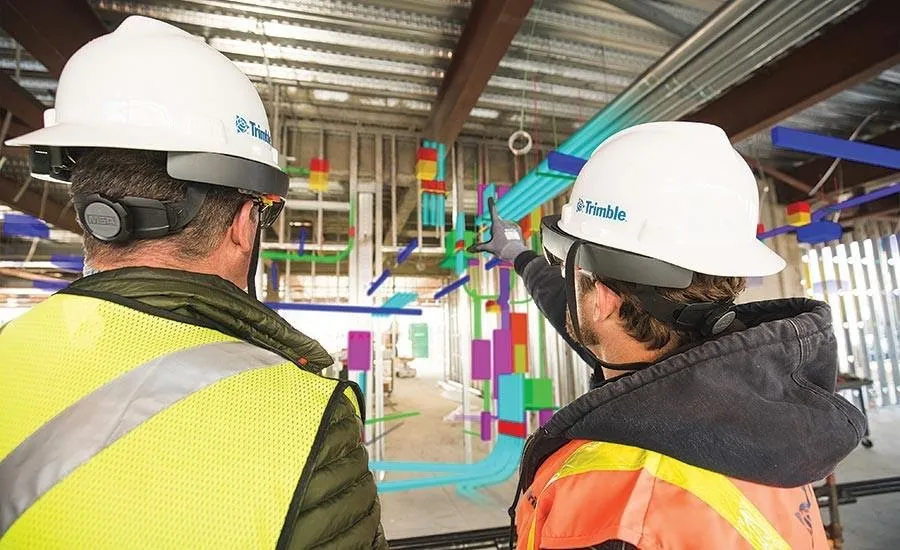Augmented Reality (AR) is revolutionizing the construction industry, offering innovative solutions that enhance efficiency, safety, and collaboration throughout the project lifecycle. This article explores the transformative potential of AR in construction, its current applications, and the promising future it holds for the industry.
Understanding Augmented Reality in Construction
Augmented Reality overlays digital information onto the physical world, providing real-time insights and virtual enhancements to the construction environment. By integrating digital models, data visualization, and spatial context into real-world settings, AR empowers construction professionals to visualize designs, streamline workflows, and mitigate risks more effectively.
Current Applications of AR in Construction
- Design and Planning
- Visualization: Architects and engineers use AR to visualize building designs at scale, allowing stakeholders to experience and interact with 3D models in real-world environments.
- Spatial Mapping: AR enables precise spatial mapping and layout planning on construction sites, helping to optimize resource allocation and logistics.
- Construction Management
- On-Site Guidance: AR provides on-site workers with real-time instructions, safety guidelines, and procedural information overlaid on physical structures.
- Progress Monitoring: Project managers use AR to track construction progress, compare as-built conditions with digital models, and identify discrepancies early.
- Maintenance and Operations
- Facility Management: AR assists facility managers in visualizing maintenance needs, accessing equipment manuals, and conducting virtual inspections without disrupting operations.
- Training and Skills Development: AR-based training programs enhance worker skills by simulating complex tasks, safety protocols, and equipment operations in a controlled virtual environment.
The Future Potential of AR in Construction
- Enhanced Collaboration and Communication
- Virtual Collaboration: AR facilitates real-time collaboration among distributed teams, enabling architects, engineers, and contractors to work together seamlessly across geographical locations.
- Client Engagement: AR allows clients and stakeholders to visualize and provide feedback on designs and project milestones more intuitively, fostering transparency and trust.
- Safety and Risk Management
- Real-Time Hazard Identification: AR enhances safety by overlaying real-time hazard alerts, safety protocols, and evacuation routes directly onto workers’ field of view.
- Training Simulations: AR-based simulations prepare workers for emergency scenarios and high-risk tasks, reducing accidents and improving overall job site safety.
- Prefabrication and Modular Construction
- AR-Assisted Assembly: AR guides workers in assembling prefabricated components accurately, reducing construction time and minimizing errors during installation.
- Quality Control: AR enables quality inspections of prefabricated modules and components, ensuring compliance with design specifications and regulatory standards.
- Sustainability and Efficiency
- Resource Optimization: AR helps optimize material usage, energy efficiency, and waste reduction by providing data-driven insights and real-time analytics during construction processes.
- Lifecycle Management: AR supports sustainable building practices by integrating data from IoT sensors and smart devices to monitor building performance and operational efficiency over time.
Overcoming Challenges and Adoption Barriers
- Technological Integration: Integrating AR with existing construction workflows requires investment in hardware, software, and training to ensure seamless adoption and integration.
- Data Security and Privacy: Protecting sensitive project data and maintaining privacy while leveraging AR technologies in collaborative environments remains a critical concern for construction firms.
Conclusion
Augmented Reality is poised to redefine the future of construction by enhancing productivity, safety, and sustainability across all phases of the building lifecycle. As AR technology continues to evolve, construction firms that embrace innovation and digital transformation will gain a competitive edge in delivering high-quality projects efficiently and cost-effectively. By leveraging AR to visualize designs, improve communication, and optimize construction processes, the industry can unlock new levels of efficiency, creativity, and safety, paving the way for a smarter and more resilient built environment. Embrace the future of construction with Augmented Reality and embark on a journey towards safer, more efficient, and sustainable building practices.
